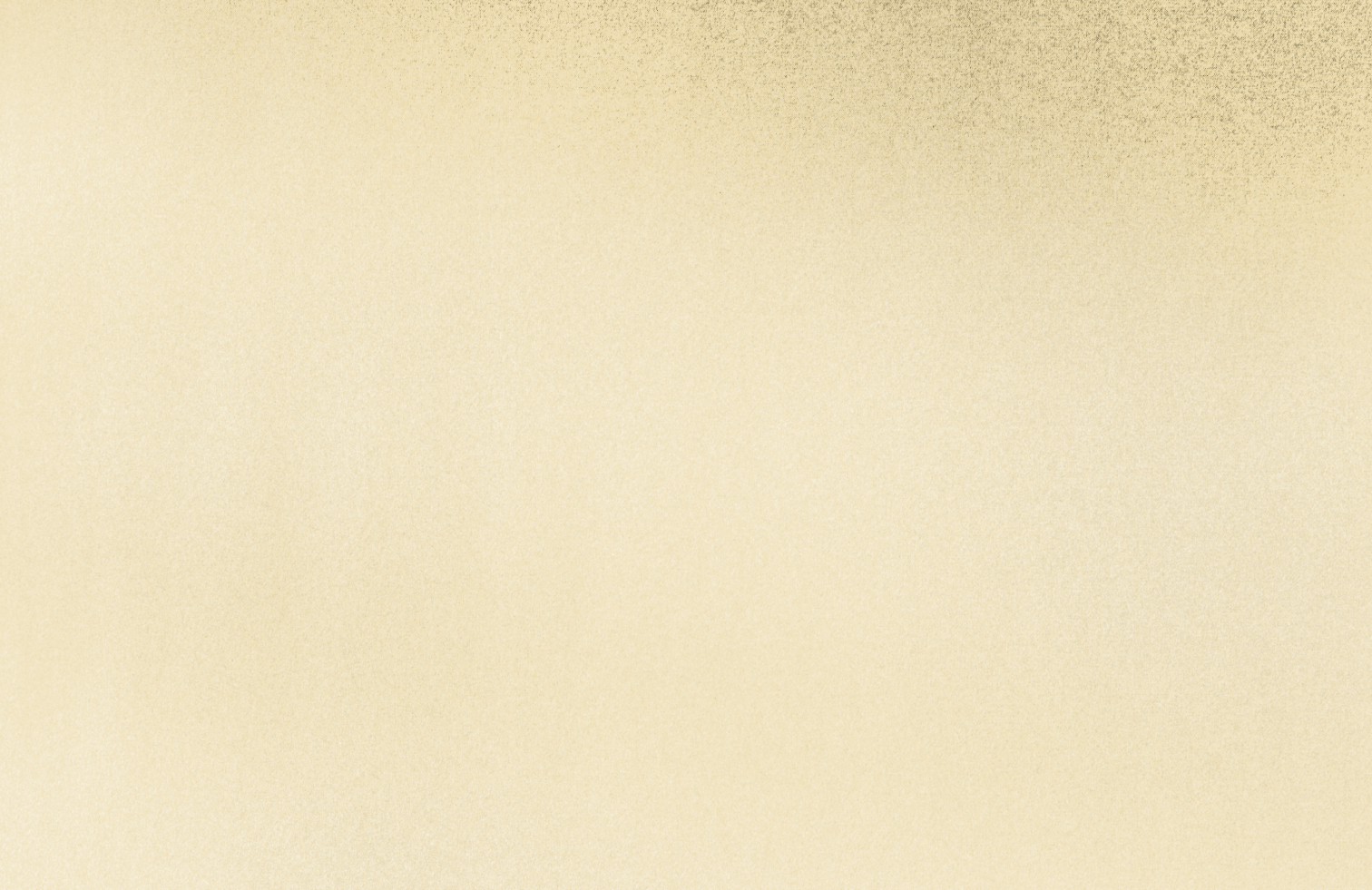

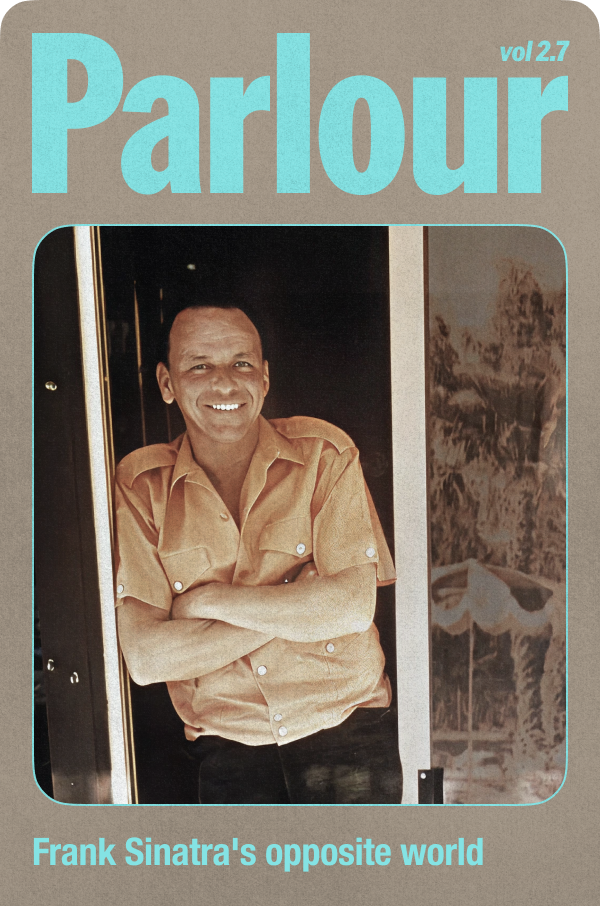
"You gotta love livin', baby, 'cause dyin' is a pain in the neck."
It's 1960. You've got a drink in your hand, lounging poolside at the Twin Palms. Frank Sinatra's "Summer Wind" is playing in the background. You cover your eyes from the sun, looking for the ice bucket, grab a few, and drop them in your glass. Clink. Then you sit back while a slight desert breeze whisps across your body. At this point, you're thinking to yourself… "damn, I feel like I'm in a movie." And it's funny because that's basically how Frank Sinatra's Palm Springs life was like. He perfected this form of living, almost to the point that it was art.
At the time, when everyone was rushing towards the space age, Frank ran in the other direction. He figured out that how you spend your downtime says more about you than your day job ever would. Frank turned Palm Springs into his personal lab for sophisticated leisure living. And the best thing about it is that he left us a blueprint.
The thing is, we're living in Frank's opposite world. We've convinced ourselves that being constantly available, perpetually busy, and always "on" is the path to success. Frank proved there was a better way, and it's more relevant than ever.
Issue forwarded by a friend? Subscribe here.
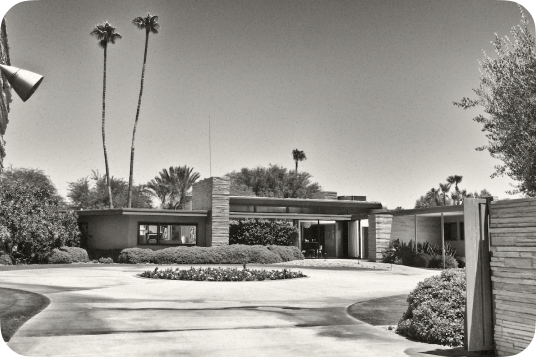
Frank Sinatra was sitting at a bar when inspiration struck. He grabbed a cocktail napkin and sketched out his dream home, then handed it to architect E. Stewart Williams. What came next was a 4,500 square foot masterpiece that invented California desert modernism.
But what made Twin Palms legendary was that Frank designed the house around how he wanted to live, not how he was supposed to live. Floor to ceiling windows that blurred indoor and outdoor space. An open plan that made conversations flow from room to room. A famous piano-shaped pool…
It wasn't just Instagram worthy architecture, it was Frank understanding that your environment shapes your experience.
The house became a magnet for Hollywood's elite. Not because it was the biggest or most expensive. It was because Frank cracked the code on intentional living. Every detail served a purpose: good lighting for conversation, comfortable seating that faced each other instead of a TV, and always (I mean always) a proper drink within arm's reach.
Steal from Frank: Look around your space right now. Does it invite the kind of life you want to live? Frank proved that sophistication isn't about what you own, it's about how you live in your space.
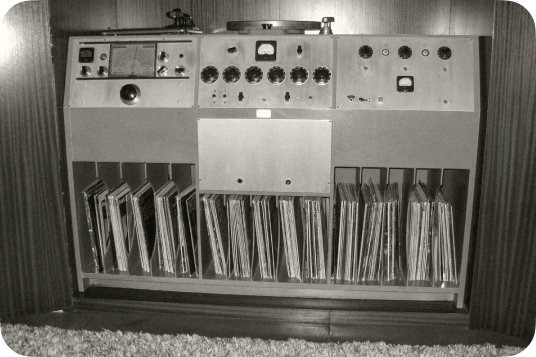
Frank was obsessive about music, but not in the way you'd expect. He didn't just play whatever was popular. He curated the soundtrack to his life like he was directing a movie.
If we're talking modern day, he would play songs like Winston Surfshirt's "Be About You" for morning coffee by the pool, The Dip’s “O.P. Jebediah” for midday lounging. It was all about telling a story through sound, understanding that your playlist needs to breathe.
The point is that he treated music like it mattered. Vinyl foundation, proper speakers, understanding that background music isn't background… It's the foreground for your life.
Steal from Frank: Stop letting Spotify decide your vibe. Create playlists for different parts of your day. Make your morning coffee feel cinematic.

Frank's Palm Springs uniform was very simple: terry cabana shirts, sunglasses that made him look like he had secrets, shoes that slipped on and off…
Frank wanted to look like he meant it, but not like he meant business. Quality fabrics that felt good against the desert heat. Effortless fits that looked intentional without trying too hard. Outfits that worked with the environment instead of fighting it.
Forget logos. Forget hype. Frank wore something that turns heads next summer, not just this summer. Style that aged like good wine, not milk.
Steal from Frank: Find your version of Frank's cabana shirt. That one piece that makes you feel instantly more like yourself.
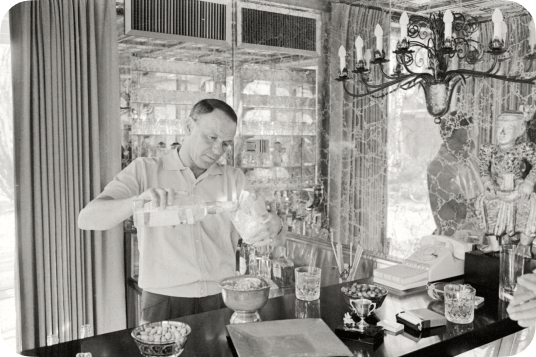
When Frank needed to conduct business in Palm Springs, he didn't rent a conference room. He went to Melvyn's Restaurant, where his regular table became an unofficial office.
It wasn't the food that made Melvyn's perfect. It was the high backed seats that created intimate conversation zones. You could speak freely without the whole room listening in. Frank understood that the best deals happen when people feel comfortable enough to tell the truth.
His go to 3:1 gin martini was a statement of his principles. The specific ratio. The quality of gin. The ceremony of preparation. He knew that how you present something is just as important as what you're presenting.
One thing that stood out about Melvyn's that oozes Frank swagger was the fact that you were not allowed to flag down waiters. You had to wait for service to come to you. He was all about the art of not rushing the process.
Steal from Frank: Turn making a drink (or coffee) into theater. Move slowly. Let the ritual matter.
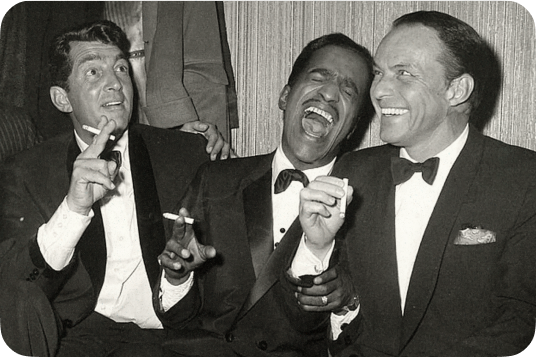
When the sun went down and the desert cooled off, Frank would head to The Purple Room, an extremely intimate supper club that felt like someone's living room. Two drink minimum. Low lighting. Tables so close you had to whisper your secrets.
The Purple Room was sophistication in small doses. Music that always took center stage. Conversations that got deeper as the night went on. The understanding that the night doesn't end when dinner ends.
Frank was a student of atmosphere. He watched how the lighting made everyone look like they belonged in film noir. How the acoustics let you hear every note without drowning out conversation. He was learning the blueprint for creating moments that felt cinematic.
Steal from Frank: Create your own version of after hours sophistication. Good music, dim lighting, and being genuinely curious about the person in front of you.
Frank had a saying: "Good light is good manners". But it went deeper than that. He understood that lighting doesn't just illuminate… it transforms. That a record player in the corner and a bright towel draped over a low chair weren’t just decor, it was lifestyle choices. Frank was creating an environment where ease was the ultimate luxury.
What I love about Frank is that he figured out what we're still learning: leisure isn't the opposite of work, it's the completion of it.
The way you relax, the care you put into your downtime, the attention you pay to pleasure. They're not separate from who you are. They are who you are. Leisure is practice. Like music, or cooking, or any art worth mastering. It requires attention and a little swagger. You're not killing time, you're creating it.
So whether you're by the pool in Palm Springs or on a fire escape in Brooklyn, remember Frank's blueprint: leisure is a choice, not a circumstance. And the most important performance of all is the one where you're the only audience that matters.
Thank you for reading! Let us know what you thought of this issue by replying directly to this email. Cheers 🥂
Join 2,568 readers 💃🕺🏽